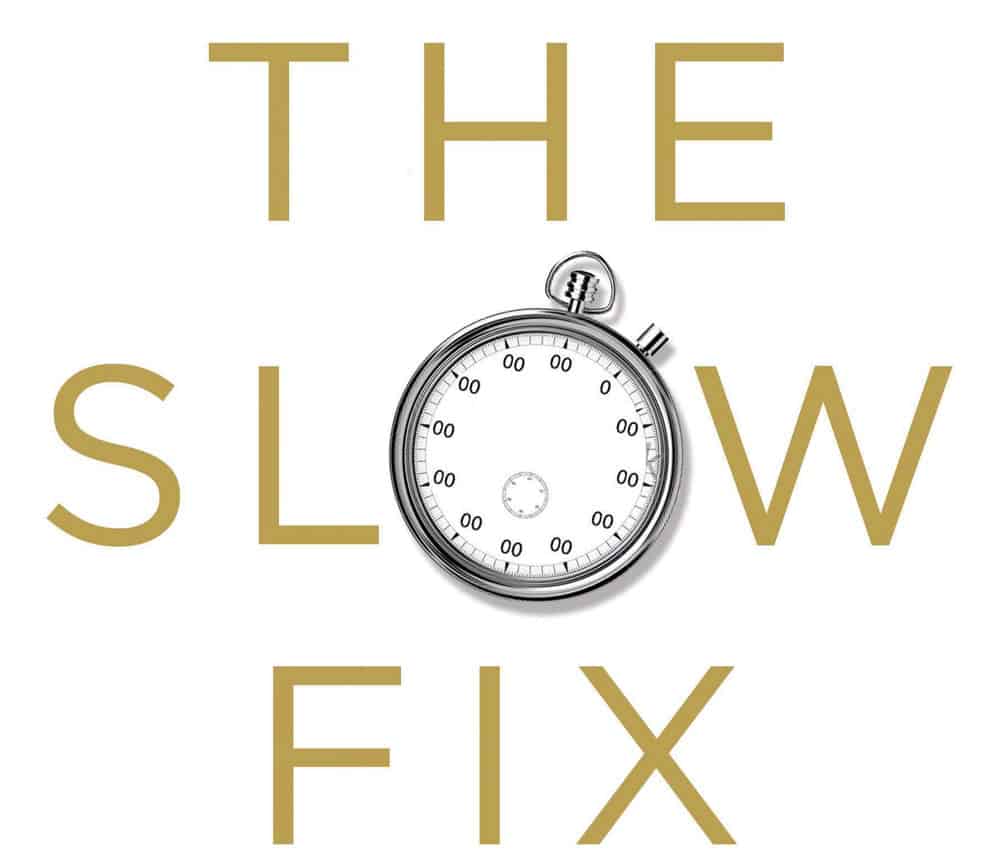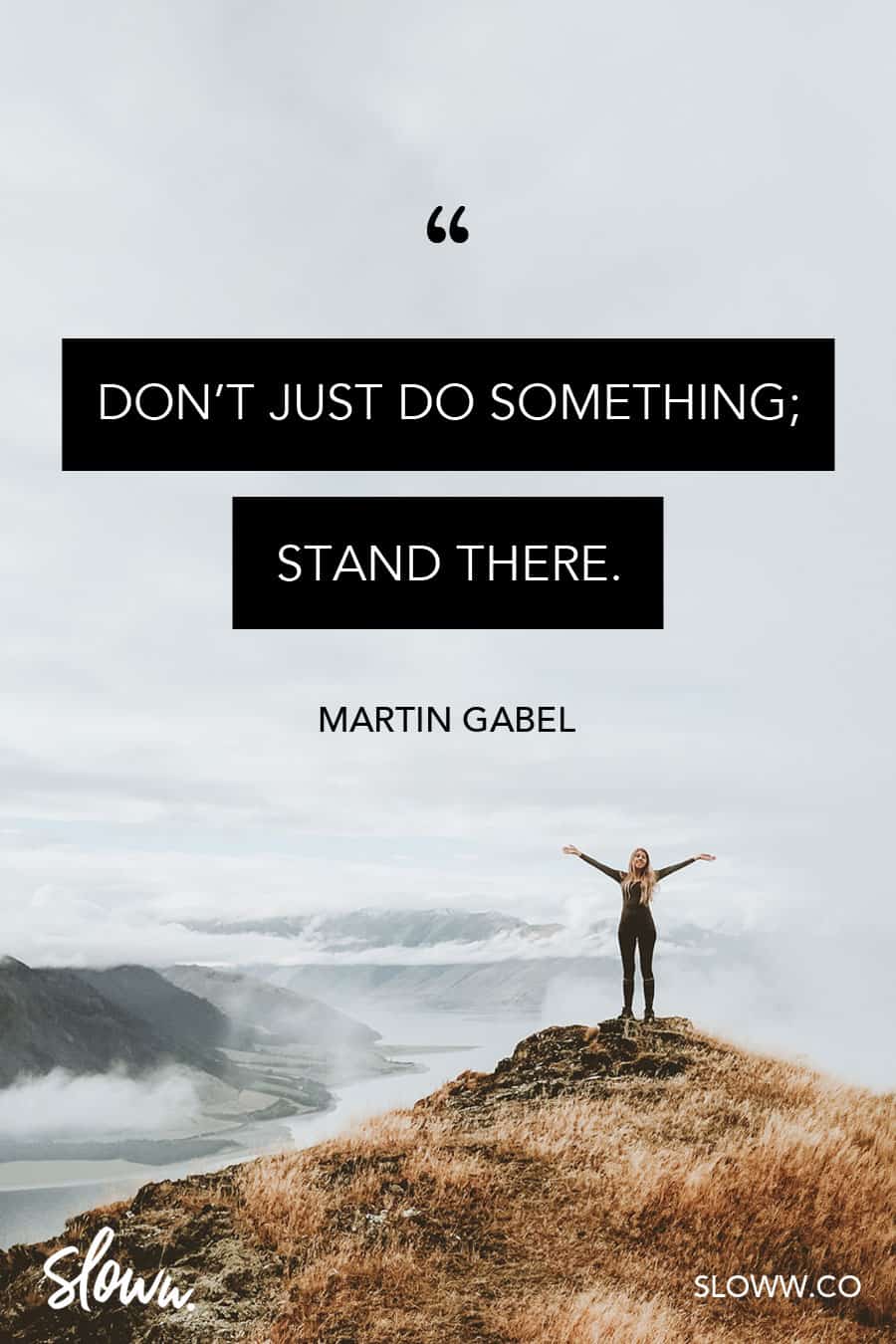
Carl Honoré is one of the leaders of the slow living movement. You can see what inspired his transformation to slow living here. He’s known for his international bestseller, In Praise of Slow, and I greatly appreciate the global worldview he brings to his writing.
The book is really about the universal lessons of problem solving more than slow living. It just so happens that a slow fix is a better way to solve problems than a quick fix.
It’s jam-packed with case studies, interesting examples, inspiring quotes, and more. I like to dive deep into research, but this book is on another level. It took me awhile to finish the book because of its exhaustive approach.
In this post, I’ve pulled out highlights but left out many of the specific examples and case studies Carl mentions throughout the book. Enjoy!
Quick Summary of The Slow Fix: Solve Problems, Work Smarter, and Live Better in a World Addicted to Speed by Carl Honoré
“I read many books, blogs, articles, and academic papers for my research into the art of problem solving.”
- “My focus in this book is on a very different kind of problem, where the parameters are unclear and shifting, where human behavior comes into play, where there may not even be a right answer.”
- “Some solutions we encounter may work in your own life, organization, or community, but my goal is to go much deeper. It is to draw some universal lessons about how to find the best solution when anything goes wrong. That means spotting the common ground between problems that on the surface seem completely unrelated.”
- “So what is the Slow Fix? That is the question we will answer in the coming pages. But already it seems clear that it rests on a virtue that is in short supply nowadays: patience.”
- “A Slow Movement is gaining momentum as more and more people challenge the canard that faster is always better. To take part, you don’t have to ditch your career, toss the iPhone, or join a commune. Living Slow is not about living like a snail. It means doing everything at the right speed—fast, slow, or whatever pace delivers the best results. Many micromovements are already thriving under the Slow umbrella: Slow Food, Slow Cities, Slow Work, Slow Sex, Slow Technology, Slow Education, Slow Parenting, Slow Design, Slow Travel, Slow Fashion, Slow Science, Slow Art.”
- “The secret lies in finding the right blend of ingredients from the Slow Fix recipe.”
- “Remind the critics—and yourself—that the Slow Fix is always a smart investment. Put in the effort now, and save time and money later.”
- “To master the Slow Fix we need to live at a more reasonable pace. That means giving every moment the time and attention it deserves. Instead of fretting over the trivial concerns that loom so large in a life of hurry—Where are my keys? When will this traffic start moving? Why is this elevator taking so long?—we can begin to confront the genuinely big questions: What is my purpose? What sort of world do I want to leave behind? And how can we all change course to get there? If the earth is going to sustain eight, nine, or even ten billion people, we need a revolution in the way we live, work, travel, consume, and think. Making that happen will be the biggest Slow Fix of all.”
The Quick Fix Problem:
- “Let’s be honest: when it comes to chasing instant results, I am not alone. In every walk of life, from medicine and relationships to business and politics, we are all hooked on the quick fix.”
- “Today, though, the quick fix has become the standard across the board in our fast-forward, on-demand, just-add-water culture. Who has the time or patience for Aristotelian deliberation and the long view anymore?”
- “In the never-ending quest for instant relief, the average Briton now pops, according to one estimate, forty thousand pills in a lifetime.”
- “Every quick fix whispers the same seductive promise of maximum return for minimum effort.”
- “Trying to solve problems in a hurry—sticking on a Band-Aid when surgery is needed—might deliver temporary reprieve, but usually at the price of storing up worse trouble for later. The hard, unpalatable truth is that the quick fix never truly fixes anything at all. And sometimes it just makes things worse.”
- “When dealing with such problems, the quick fix addresses symptoms rather than root causes. It puts short-term relief before long-term cure. It makes no provision for unwelcome side effects. Every culture has a tradition of skin-deep fixes.”
- “These days hurry is our answer to every problem. We walk fast, talk fast, read fast, eat fast, make love fast, and think fast.”
- “Day after day, week after week, the immediate trumps the important.”
The Slow Fix Solution (or Slow Fix Recipe):
“When taking on any complex problem, take the time to”:
Admit mistakes:
- “The truth is that any Slow Fix worthy of the name usually starts with a mea culpa. Whether at work or in relationships, most of us tend to drift along, pretending that all is well—remember the status quo bias and the legacy problem.”
- “Admitting there is a problem, and accepting our share of the blame, can jolt us out of that rut.”
Work out what is really going wrong:
- “Taking the time to think hard about the problem in order to arrive at the right diagnosis.”
- “The golden rule of the seven Ps (Prior Planning and Preparation Prevents Piss-Poor Performance)”
Sweat the small stuff:
- “We have seen how widening the lens to think holistically and take in the long view is essential for solving complex problems. At the same time, zooming in on the tiniest details can be just as vital.”
Think long:
- “Of course pondering the future does not come naturally in our shoot-now-ask-questions-later culture.”
- “Sometimes the best way to unlock a complex problem is to set a clear, long-term goal and judge everything you do against it.”
- “How can we think longer in our own lives? Start by setting an overarching goal…that is clear enough to be a guiding light but vague enough not to blind you…Judge every move you make by how much it helps you reach that goal.”
- “When we are calm, unhurried, and free from stress and distractions the brain slips into a richer, more nuanced mode of thought. Some call this Slow Thinking, and the best minds have always understood its power.”
Join the dots to build holistic solutions:
- “The trouble is that holistic thinking does not come easily to us. As we saw earlier, the human brain often slips into tunnel vision…That is why the best problem solvers make a big effort to join the dots.”
Seek ideas from everywhere, work with others and share the credit
- “We have already seen how that slow, meandering thinking is the lifeblood of creativity and cannot be rushed.”
Build up expertise while remaining skeptical of experts:
- “Expertise built on practice, training, and experience is the most reliable recipe for a good fix when time is tight.”
Think alone and together:
- “When consultants compared 600 computer programmers across 92 companies to pinpoint what separated the top performers from the pack, they found the secret ingredient was not higher pay or more experience but having a private work space that minimized interruptions.”
- “That is why throughout history and across disciplines, the best problem solvers, the big beasts of creativity who conjure earthshaking breakthroughs, have cherished solitude. Einstein spent hours staring into space in his office at Princeton University. William Wordsworth described Newton as ‘a mind for ever / Voyaging through strange seas of Thought, alone.’ Every major religion has prophets—Buddha, Muhammad, Moses—who went out into the wilderness to grapple with the big questions on their own. Picasso once said, ‘Without great solitude, no serious work is possible.’ This remains true in the modern, high-tech world. In his memoir, Steve Wozniak described how he built the first two Apple computers working by himself late into the night: ‘Most inventors and engineers I’ve met are like me … they live in their heads. They’re almost like artists … and artists work best alone.’”
- “The more control we have over our working environment, many studies show, the better we perform.”
Tap emotions:
- “Sharpen your problem-solving edge by taking more control of your working conditions, from your schedule to your use of technology. When seeking a Slow Fix, always ask, ‘Who am I trying to help?’ and ‘How can I involve them in finding the right solution?’ Invest time in learning what really makes those people tick—not just what they think and say but what they actually feel.”
- “Taking the time to understand and channel emotions. Too often we reduce problem solving to a science of spreadsheets and flow charts and Venn diagrams. If you want to fix something, the experts tell us, do not get emotional. Run the numbers instead. Be logical. Be rational. Be scientific.”
Enlist a catalytic figure, consult and even recruit those closest to the problem:
- “The lesson from every Slow Fix is to start communicating as soon as you have something to communicate.”
- “One lesson of this book is that inspiring us to do things we would not normally do often lies at the core of a Slow Fix. Recruiting people to solve their own problems is one way to achieve that.”
Turn the search for a fix into a game, have fun:
- “The next ingredient of the Slow Fix: harnessing the human penchant for play.”
- “Play can be a profound way to engage with the world and the self.”
Follow hunches, adapt, use trial and error, embrace uncertainty:
- “That is why the final ingredient of the Slow Fix is evolution. That, of course, is the modus operandi of the best problem solver in town: Mother Nature. In the natural world, each mutation that occurs in a species is given just enough time to prove itself. Those that fail are swiftly discarded; those that represent a smart, long-term solution are quickly rolled out species-wide. The whole ecosystem then adjusts to absorb the resulting effect of the change. And even then the adapting and tweaking carries on.”
- “Of course no one likes to think of surgeons, firefighters, or airline pilots experimenting on the job. But the road to expertise is always paved with years of trial and error.”
- “The way to navigate through a scenario of ever-changing parameters and possibilities, according to complexity theorists at the Santa Fe Institute in New Mexico, is to blend lots of baby steps with the occasional great leap forward.”
And, one of my favorite quotes from the book:

Other slow living books by Carl Honoré
- In Praise of Slowness: Challenging the Cult of Speed
- Under Pressure: Rescuing Our Children from the Culture of Hyper-Parenting
You can check out all of my book summaries here.
You can follow Sloww via email using the form field below this post or on social media: Twitter | Facebook | Instagram | Pinterest | Medium | Reddit | Quora







